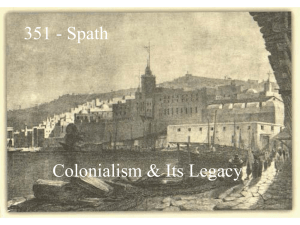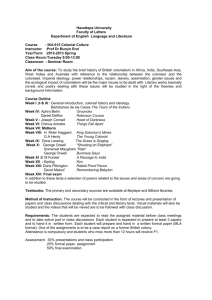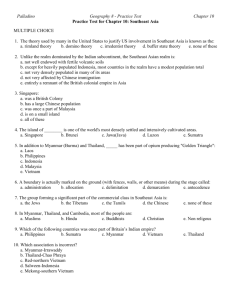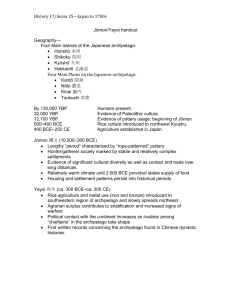Archipelago
advertisement
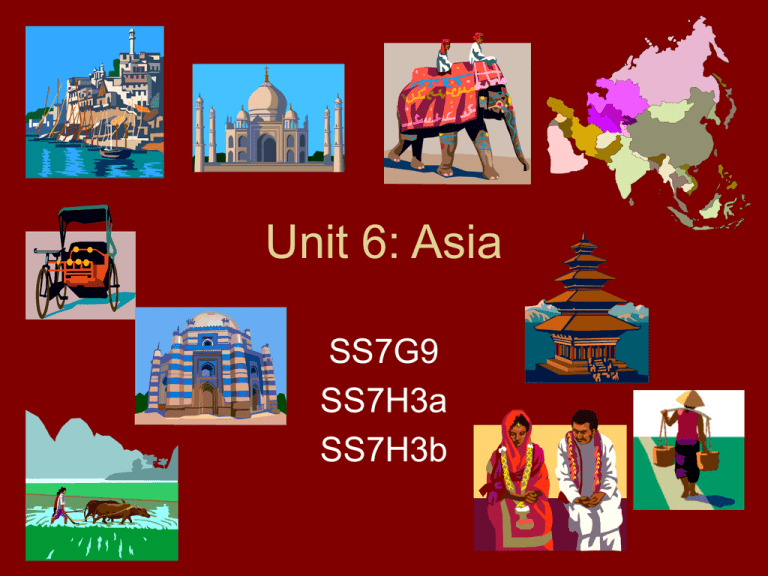
Unit 6: Asia SS7G9 SS7H3a SS7H3b SS7G9 • The student will locate selected features in Southern and Eastern Asia. • Words to know: – Archipelago: a group of series of islands. The country of Indonesia is the world’s largest archipelago. – There are over 17,000 islands in the Indonesia Archipelago. Number your paper from 1 to 9. 4 5 6 3 7 1 2 8 9 Answers 1. Pakistan 2. India 3. China 4. North Korea 5. South Korea 6. Japan 7. Taiwan 8. Vietnam 9. Indonesia Number your paper from 1 to 16. 9 6 3 2 7 8 5 10 4 11 1 12 13 15 16 14 Answers 1. 2. 3. 4.Himalayan Mtns. 5. 6. 7. 8. 9. 10. 11. 12. 13. Gulf of Tonkin 14. 15. 16. SS7H3a • Describe how nationalism led to independence in India and Vietnam. • Words to know: – Nationalism: a strong sense of pride in one’s own country; often leading towards an independence movement. – Indo-China: former French colony located in Southeast Asia that consisted of the modern countries of Cambodia, Laos, and Vietnam. – Jawaharlal Nehru: the first prime minister of independent India after they gained independence from Great Britain in 1947. – Kashmir: region claimed both by India and Pakistan because of its rich fresh water resources. India: Collapse of Colonialism • December 31, 1600 – British East India got a royal charter to incorporate. – They wanted to exploit trade in East Asia, Southeast Asia, and India. – They took over the spice trade previously controlled by Spain and Portugal. – The company acquired the following items: • • • • • Spices Cotton Silk goods Indigo Saltpeter • During the mid-18th century the company actively traded tea. They illegally imported opium to pay for the tea which angered many people and helped build resistance against colonial powers. • Sepoy Rebellion of 1857 – East India Company lost much of its power. – British government took direct control over India. – By 1873, the company had lost its power completely. • By the end of WWII, many European countries began to lose control over their colonial empires due to the social and financial strain caused by the war. • There was also a stronger nationalist resistance that resulted in the eventual freedom of most of the occupied countries in Asia. • British colonialism victimized India. For almost 350 years, the British completely controlled India. They ignored Indian culture, and deprived Indians of opportunities to succeed in their own country. • Nationalism took root in India during the 18th century. Indians educated in British schools began to wonder why they should be westernized and become more like the British. • There were many organizations in India working to achieve independence from the British. The Indian National Congress held it’s first meeting in Bombay in December of 1885. They encouraged people to buy Indian-made products and were instrumental in boycotting British goods. • Another important leader was Mohandas Gandhi. • He believed that non-violent resistence as well as a full boycott on all things British (goods, schools, universities, and courts), were ways to bring about the end of British rule. • It took many years of struggle but finally on August 15th, 1947, India gained its freedom from British colonial rule and became an independent nation.

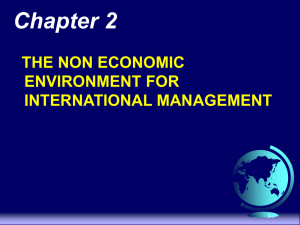
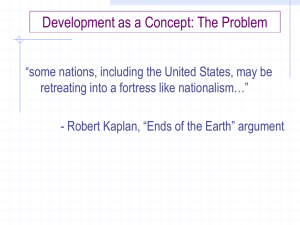
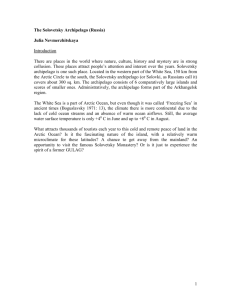
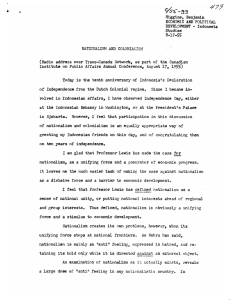

![“The Progress of invention is really a threat [to monarchy]. Whenever](http://s2.studylib.net/store/data/005328855_1-dcf2226918c1b7efad661cb19485529d-300x300.png)

